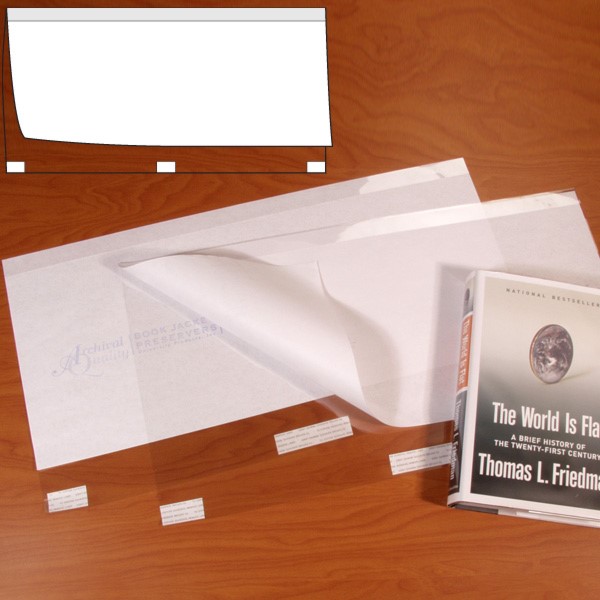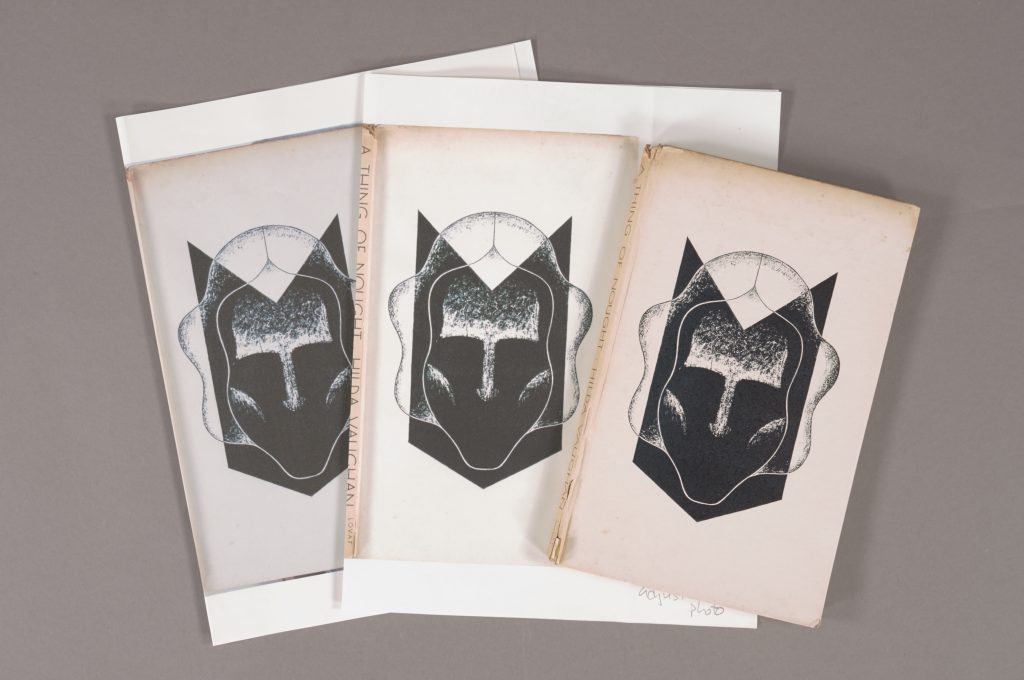By Rachel Penniman, Senior Conservation Technician
This copy of Hilda Vaughan’s ‘A Thing of Nought’ was sent to the conservation lab to have a box made to protect the fragile dust jacket and cover. The illustration and lettering printed directly on the front board is visible through a transparent, blue tinted plastic dust jacket that is itself printed with the title and author’s name.
Unfortunately the poor quality plastic of the dust jacket has not aged well. Small pieces of the plastic dust jacket were in danger of flaking off with every movement and could hardly be handled safely. In order to keep the dust jacket on the book but still allow for handling of the item, Curator Andy Armacost had the idea of using a dust jacket protector similar to the type sometimes used on our general collections items. This traditional style of dust jacket cover has a Mylar front and a paper backing that wrap around the dust jacket to protect it from wear.

This would have the benefit of completely surrounding the plastic dust jacket and preserving all of its parts while allowing it to stay in place on the book and be handled. The trouble is that the paper backing on this kind of product would obscure what was printed directly on the book’s cover. So I attempted to create my own dust jacket cover where the paper backing was printed with a copy of the original boards.
I tried black and white photocopies of the cover on white paper and colored papers. They gave a similar idea of the original cover design, but I was really hoping for something more detailed and accurate.

I tried again using our photodocumentation setup to take a color photograph of the cover but when I printed out the image the color didn’t match the original at all.

Senior Conservator Erin Hammeke had previously used a tool developed by Victoria Binder to make a color accurate printed reproduction for use in an exhibit so I decided to look into that. Victoria’s article in Topics in Photographic Preservation entitled ‘Digital Fills for Photographs with Glossy Surfaces’ discusses using the Action feature in Photoshop to automatically make variations on settings like midtone color, exposure, and saturation in an easily printable contact sheet. I wasn’t looking to create a fill for a photograph, but color matching a printed image to an original was exactly what I needed. By using Victoria’s Actions Set I could easily print contact sheets with up to 15 variations on a single page, and pick the one that looked closest to the original without wasting reams of paper.
I adjusted my image in Photoshop according to the best results from the contact sheets. The printed photograph gave all the detail of the appearance of the original board decoration and the adjustments made the color an almost perfect match when printed.

The original plastic dust jacket was placed over the printed reproduction of the book cover and a piece of Mylar was folded around both. When the jacket assembly is put on the book the visual effect is very similar to the original.

Because the cover isn’t attached in any way to the book, a researcher can simply unfold the jacket assembly and view the original book cover decoration beneath.

I’m so happy with how this project turned out. The original plastic dust jacket is much easier to handle safely, the original appearance of the item is retained, and all of the parts can still be kept together.





Nice, and a great solution.